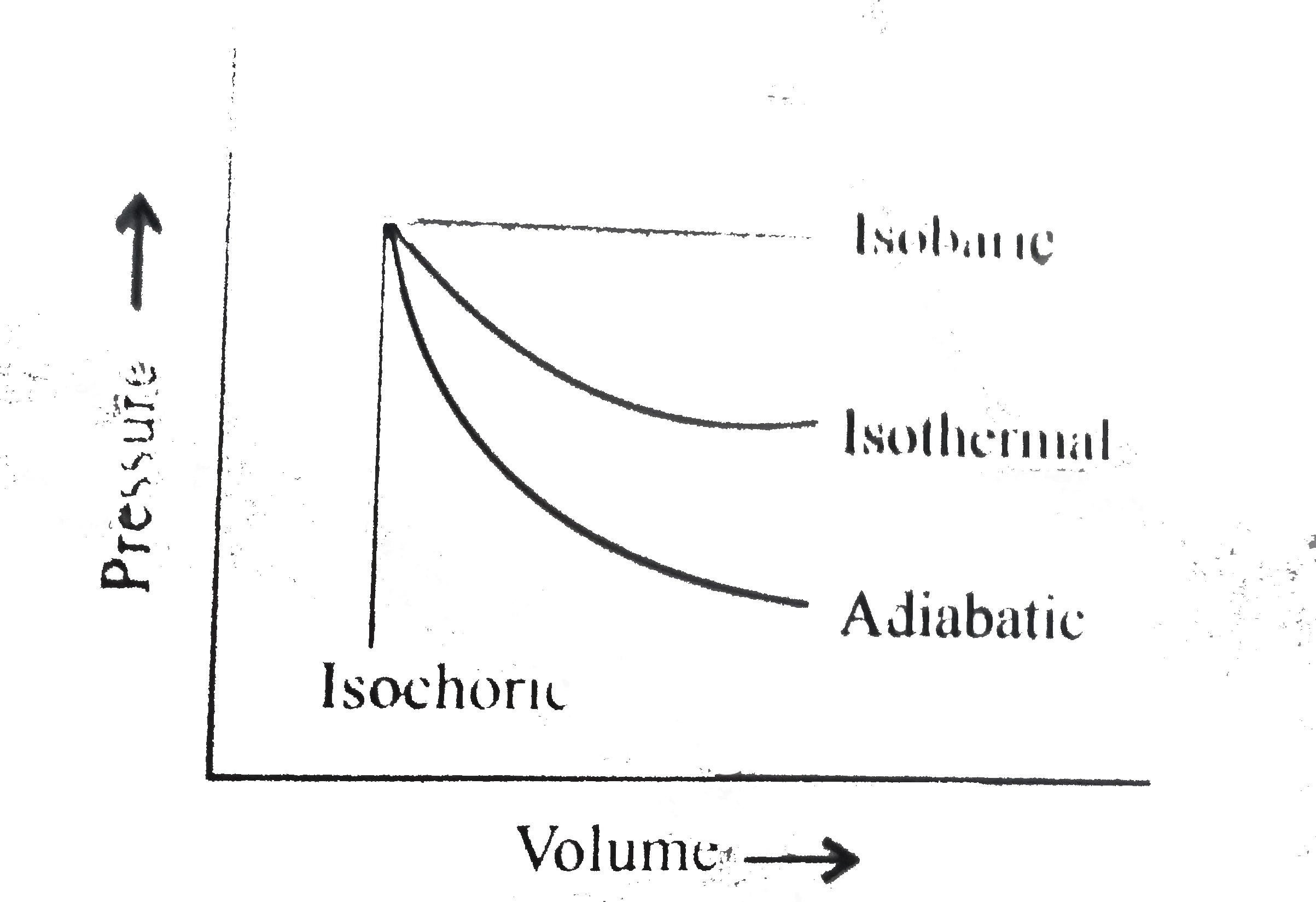Calculateq,W,ΔU and ΔH for the isothermal reversible expansion of one mole of an ideal gas from an initial pressure of 1.0 bar to a final pressure of 0.1 bar at a constant temperature of 273K.
For isothermal reversible expansion, w=−2.303nRTlog(P1P2)
=−2.303×1×8.314×273×log(1.00.1)
=−5227.2 J
At constant temperature, for expansion ΔT=0, therefore ΔE=0
Also, ΔE=1×Cv×ΔT=0. (for 1 mol)
ΔE=q+w
∴q=−W=5227.2 J
Also, when temeprature is constant, P1V1=P2V2
ΔH=ΔE+Δ(PV)
∴ΔH=0
Topper's Solved these Questions
- THERMODYNAMICS AND THERMOCHEMISTRY Book:FIITJEEChapter:THERMODYNAMICS AND THERMOCHEMISTRY Exercise:SOLVED PROBLEM (SUBJECTIVE)
Explore 13 Videos
- THERMODYNAMICS AND THERMOCHEMISTRY Book:FIITJEEChapter:THERMODYNAMICS AND THERMOCHEMISTRY Exercise:SOLVED PROBLEMS (OBJECTIVE)
Explore 28 Videos
- TEST PAPERSBook:FIITJEEChapter:TEST PAPERSExercise:CHEMISTRY
Explore 747 Videos
- TRANSITION ELEMENTS & COORDINATION COMPOUNDSBook:FIITJEEChapter:TRANSITION ELEMENTS & COORDINATION COMPOUNDSExercise:MATCHIG LIST TYPE QUESTIONS
Explore 1 Video
Similar Questions
Calculate q,W,ΔU and ΔH for the isothermal reversible expansion of one mole of an ideal gas from an initial pressure of 1.0¯ to a final pressure of 0.1¯ at a constant temperature of 273K.
View SolutionCalculateq,W,ΔU and ΔH for the isothermal reversible expansion of one mole of an ideal gas from an initial pressure of 1.0 bar to a final pressure of 0.1 bar at a constant temperature of 273K.
View Solution
Knowledge Check
Calculate Q and w for the isothermal reversible expansion of one mole an ideal gas from an initial pressure of 1.0 bar to a final pressure of 0.1 bar at a constant temperature of 273 K respectively.
A5.22kJ, -5.22 kJB−5.22kJ,5.22kJC27.3 kJ, -27.3 kJD−27.3kJ,27.3kJThe pressure-volume of varies thermodynamic process is shown in graphs:

Work is the mole of transference of energy. It has been observed that reversible work done by the system is the maximum obtainable work.
wrev>wirr
The works of isothermal and adiabatic processes are different from each other.
wisothermal reversible=2.303nRTlog10(V2V1)
=2.303nRTlog10(P2P1)
wadiabatic reversible=CV(T1−T2)
The q value and work done in isothermal reversible expansion of one mole of an ideal gas from initial pressure of 1 bar to final pressure of 0.1 bar at constant temperature 273K are:A5.22kJ,−5.22kJB+6.22kJ,6.22kJC5.22J,5.22JD−6.22J,−6.22J1 mole of an ideal gas is expanded from an initial pressure of 1 bar to final pressure of 0.1 bar at constant temperature of 273 K. Predict which of the following is not true?
AΔE = 0BΔH = 0CPV is constantDΔS←0
Calculate q,W,ΔU and ΔH for the isothermal reversible expansion of one mole of an ideal gas from an initial pressure of 1.0 bar to a final pressure of 0.1 bar at a constant temperature of 273K.
View SolutionCalculate q,w, and ΔU for the isothermal reversible expansion of one mole of an ideal gas from an initial pressure of 2.0 bar to a final pressure of 0.2 bar at a constant temperature of 273K.
View SolutionCalculate Q,W,ΔE and ΔH for the isothermal reversible expansion of 1 mole of an ideal gas from initial pressure of 1.0 bar to final pressure of 0.1bar at constant temperature of 273K.
View SolutionCalculate q,w,ΔU, and ΔH for this isothermal reversible expansion of 1mole of an ideal gas from an initial pressure of 10.0 bar to final pressure of 100bar at a constant pressure of 273K.
View SolutionCalculate the ΔH for the isothermal reversible expansion of 1 mole of an ideal gas from initial pressure of 0.1¯ at a constant temperature at 273K.
View Solution

